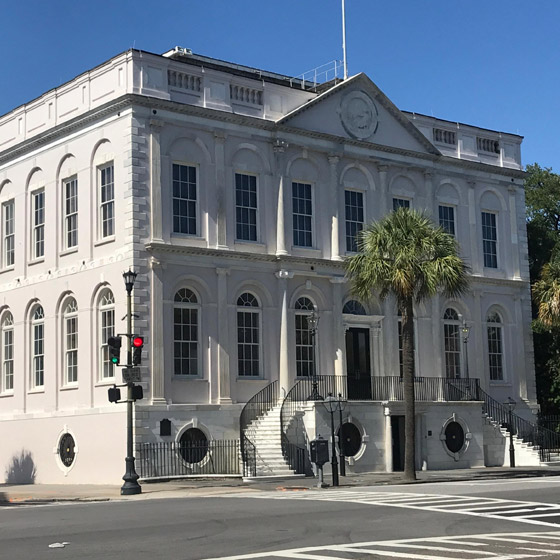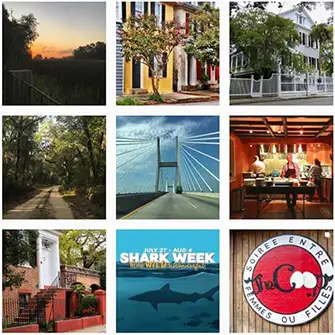
The Four Corners of Law: City Hall Part II
The interior of City Hall at 80 Broad Street is free of charge. If you're in Charleston for a few days, please take the time to visit. The atmosphere never fails to strike me as quiet and professional, yet elegant. The interior was completely renovated in 1882 with the City Council Chamber on the top floor being enlarged and enhanced in the Victorian style.
I've been inside the Chamber when no one else was there and also when the Chamber was overflowing with residents and interested parties waiting for an opportunity to speak regarding an important issue before the Council. I'm always impressed - with the Council Chamber, the history of the building, the gravity of the decisions made there, and with the art gallery. This is the center of Charleston's government.
A visitor could spend hours in the Council Chambers reading the history of Charleston through the art gallery there, but I have a better idea: let Lindsay Barrios guide you through the paintings. I don't know if any other City Hall in the United States has a docent for its art gallery (or if they even have art galleries), but Charleston does. Lindsay is informative and delightful; she enjoys sharing the history of the faces lining the walls of City Hall.
You will meet the first Intendant (Mayor) of Charleston, Richard Hutson, who served from 1783 to 1788. You will also meet Joel Poinsett, a Charleston native whose French Huguenot ancestors had arrived here seeking religious liberty many years before. Poinsett was United States Ambassador to Mexico in the first part of the nineteenth century; he returned to Charleston with a lovely red flower which we named after him -- the poinsettia.
When he visited here in 1825, the Marquis de Lafayette sat for Charleston's native son and artist Charles Fraser, who painted Lafayette's portrait as a watercolor miniature on ivory. Fraser also painted an oil portrait of General William Moultrie, our celebrated hero of the first major Patriot naval victory against Sir Peter Parker and the British Navy on June 28, 1776 from an unfinished palmetto log fort on Sullivan's Island. Fraser's portrait of Moultrie was posthumous; Moultrie died in 1805 and the City Council commissioned Fraser to paint Moultrie from memory.
The City Council collection includes several of our nation's early Presidents. Samuel Morse painted President James Monroe, and President Andrew Jackson was painted by John Vanderlyn. President Zachary Taylor was painted by James Henry Beard.
Our most famous painting is the portrait of President George Washington who visited Charleston for a week in May 1791. City Council commissioned artist John Trumbull, who was working here at the time, to paint Washington's portrait. Trumbull had served in the American Revolution, and at one time, was General Washington's aide-to-camp. Trumbull's first portrait of Washington was refused due to disappointment with the background (it was not Charleston), and this portrait is currently in the collection of Yale University.
The second portrait, completed in 1792, does show Charleston in the background, and it was accepted by the City. In Charleston, this portrait is commonly referred to "Trumbull's Revenge." Some visitors may notice visual elements of the portrait that would point to that title, but I suggest you get Lindsay to recount the rest of the story of "Trumbull's Revenge."
Next week we'll visit another corner of Charleston's "Four Corners of Law."



